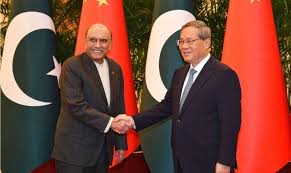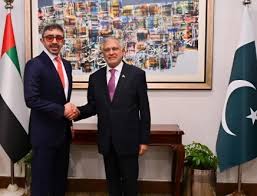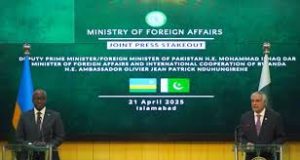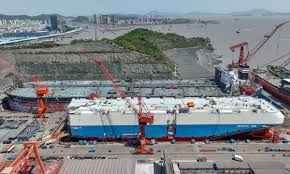On art and Bulgaria’s response to the Russia-Ukraine war
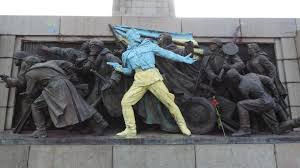
Sofia: By waging a war against Ukraine, Russia has not only become a pariah state in the West. It is also decimating the residues of affection it enjoys in places with a historic sense of indebtedness to Russia. Nowhere is this more evident than in Bulgaria. Almost everything that is awe-inspiring about its capital, Sofia, seems to be paying homage to Russia. The Alexander Nevsky Cathedral is a monument to the sacrifices of the soldiers who fought in the Russo-Turkish War. Its most important streets bear the names of Russian princes and generals. And the image of Tsar Alexander II foreshadowing the National Assembly building suggests a country perpetually expressing its gratitude for Russia’s help in liberating it from the shackles of the Ottoman Empire.

But now, two and a half years into Moscow’s invasion of Ukraine, Bulgarian attitudes to Russia have undergone a radical revision. The Soviet Army Monument (SAM), erected in the centre of Sofia in 1954 to commemorate Bulgaria’s liberation from Nazism in the 1940s is emblematic of this transformation. It has, over the years, functioned as a canvas for political expression. Bulgarians have painted bands of blue and yellow—the colours of the Ukrainian flag—on one of its central figures and even attacked it with hammers. The SAM has simultaneously been repurposed into a symbol of solidarity with Ukraine and disfigured for its association with Russia.
The hunk of bronze, once a revered landmark, has become such a magnet for confrontation that Sofia’s city council voted to remove the monument from its prime location. Years of debate reached a resolution in mid-December 2023, when a crane began to dismantle the monument in a move which provoked the Russian Foreign Ministry spokeswoman, Maria Zakharova to comment that, “Bulgaria will have to fully pay the consequences of this shameful decision.”
Stanislav Belovski, an artist renowned in Bulgaria for his satirical work, charted the SAM’s fate in photo-collage prints on his Instagram page. His image Last Dance lampoons Russia’s Ambassador to Bulgaria, Eleonora Mitrofanova, who has a notorious reputation for being undiplomatic. In Belovski’s rendering, her towering figure squats down on the monument’s central column. The subtext requires little explanation. Belovski’s street art, equally audacious, is often vandalised by pro-Russian groups. His stinging portrayal of Putin carrying his own corpse sprayed on a wall in Sofia’s centre was ripped down while a second version was graffitied with “Z”, the symbol that has, since first appearing on Russia’s military vehicles, become associated with support for the Kremlin.
But whereas in the past Bulgaria’s state institutions might have been hesitant about exhibiting Belovski’s provocative works, today they are lining up to showcase them. The Goethe Institut in Sofia commissioned a large painting by Belovski featuring three children looking out on a field of sunflowers with peace doves in the sky for their entrance fence in May 2022. Sofia’s Arsenal – Museum of Contemporary Art, meanwhile, gave Belovski a solo exhibition, I Had to do Something (February 23 – March 26, 2023), devoted to Bulgaria’s response to Russia’s war in Ukraine, particularly the calls for “neutrality” in the face of unprovoked aggression.
The museum, part of Sofia’s National Gallery, was heaving with visitors for the exhibition’s duration. The response to his work was a clear measure of how Bulgaria’s view of Russia has changed over the past year. Belovski told me that some visitors had accused him of being a sellout to the “US embassy”. But they were a minority. “There were more words of encouragement that an anti-war—and anti-Putin—position was clearly expressed in an exhibition,” he said.
Belovski isn’t a lone figure. The Bulgarian pavilion at the Venice Biennale 2024 disinterred Bulgaria’s harrowing experience of communism. A haunting installation of three domestic rooms is penetrated by the sound of breathing, sighs, cries and occasional laughter, composed by survivors of the state-led violence under the Bulgarian Communist Party, which ruled from 1945 – 1989. Items retrieved from forced labour camps, including soil, stones and grass, are subtle additions to the homely spaces.
This memorial museum is the result of a bold research project led by the artist-academic combination of Krasimira Butseva, Julian Chehirian and Lilia Topouzova. Over the past eight years, the trio have conducted interviews with survivors from labour camps and made extensive video documentation of former gulag sites in Belene—the so-called “Island of Death” modelled on Stalin’s Siberian detainment camps—and Lovech in north Bulgaria. Their laborious work in Bulgaria’s state archives has turned up vast chunks of evidence missing.
Their reconstitution and preservation of events using film, sound and literature is the most prominent memorialisation to date of the atrocities in communist Bulgaria. That their work has been supported by the Ministry of Culture and spotlighted on an international stage at this time speaks to the growing willingness of Bulgaria’s officials to reassess their country’s relationship with Moscow. This repudiation of past affinities might well find more outlets. While some of Bulgaria’s historic monuments have been relegated to the Museum of Socialist Art, others still litter the landscape. Earlier this year demands to raze a hilltop statue dedicated to the Soviet Army in the city of Plovdiv resurfaced. Whether it is also sawn apart as happened in Sofia, Russia’s aggression is certainly immolating goodwill built over centuries.

